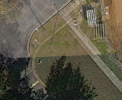- Joined
- Jul 22, 2022
- Messages
- 118
- Reaction score
- 31
- Age
- 73
I am about to purchase a new E2PV3 after my V2 flew off. It appears that for me to get the larger SC the cheapest way is to get the RTK version. I have done some mapping and have thought about getting my part 107 equivalent and learning and doing more mapping. I did some with the V2 and enjoyed it. If I don't, I can just remove the module.
I have a very rudimentary knowledge of how RTK works but I don't know enough about the details.
What other equipment do I need to connect the drone to a server? I have some amateur radio VHF and UHF equipment but have no idea they cover the same frequencies.
In addition to other equipment, are there public servers or does one pay for a subscription and if so, how much does it cost?
Any references would be appreciated.
I have a very rudimentary knowledge of how RTK works but I don't know enough about the details.
What other equipment do I need to connect the drone to a server? I have some amateur radio VHF and UHF equipment but have no idea they cover the same frequencies.
In addition to other equipment, are there public servers or does one pay for a subscription and if so, how much does it cost?
Any references would be appreciated.





